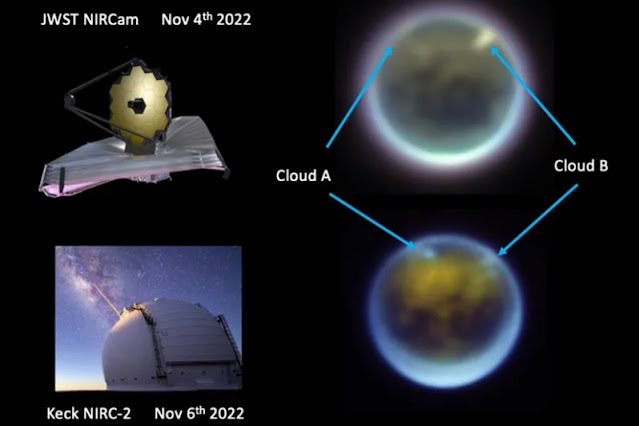Let's see what the weather is on Titan today.... Will there be methane precipitation, or will it be clouded by ethane?
NASA 's James Webb Telescope continues to amaze astronomers. It is so powerful that it can see not only Saturn's moon Titan, but also its clouds and one of its seas.
It may surprise you that we use words like seas, rains, clouds, and even rivers and lakes, when we talk about the moon Titan. It is the only place in the Solar System, along with Earth, that has them. But they are not made of water, but of hydrocarbons: methane, ethane, etc. It is a toxic atmosphere for humans.
A group of astronomers headed by the Dutch professor Imke de Pater decided a few days ago to launch an experiment: Observe the moon Titan with the James Webb telescope, and only one day later with the Keck ground -based telescope in Hawaii.
The James Webb is so powerful, it can capture clouds, and even a Titan sea. Although it must be said that the Keck spotting scope can also do it. Here are the two photos, taken 30 hours apart:
The images are quite similar. You can see a couple of clouds that have moved slightly, and even a methane sea at the north pole.
But what makes the difference is that NASA 's James Webb is also an infrared telescope , and it can capture data that no other telescope can.
Here we can see, on the left, the infrared image from James Webb's NIRCam camera , and on the right the standard image, where two clouds can be seen, and the Kraken Sea:
What the James Webb contributes, which no other telescope can achieve, is that it shows data on the lower atmosphere and the height of the clouds, among others.
Combining all the data, astronomers have obtained the most detailed information about the moon Titan since the Cassini probe visited it in 2017.
They cannot be surpassed until the Dragonfly probe visits Titan in 2032. Meanwhile, the James Webb telescope will continue to fascinate us with its incredible images that are revolutionizing astronomy.
















No comments